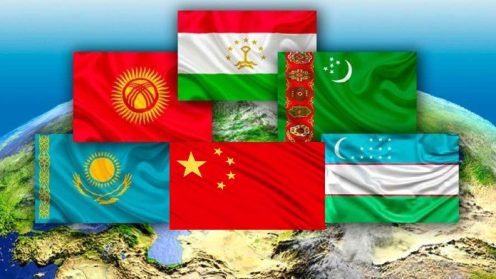
In the context of the rapidly evolving partnership between Central Asian countries and the People’s Republic of China, a new analytical report has been released that sheds light on the prevailing trends and perceptions of Chinese modernization in Central Asia. This report identifies key areas of technological cooperation, emphasizes major development strategies, and explores opportunities for their integration within the broader modernization processes.
As China advances toward its goal of establishing a modernized socialist state by 2035, it places significant focus on high-quality development, innovation, and sustainability. At the third plenary session of the 20th Central Committee of the Communist Party of China (CPC) in 2024, critical decisions were made to outline the future course of modernization. These decisions prioritize addressing development imbalances, deepening structural reforms, and bolstering scientific and technological capabilities, while fostering new drivers of growth.
The main directions of Chinese modernization:
High-quality development: China is committed to addressing unbalanced development by creating the conditions for new growth drivers and upgrading key sectors, including infrastructure, the real and digital economy, and the services sector.
Innovation: Active efforts are aimed at promoting scientific and technological reforms and creating a comprehensive innovation system. An important role is played by the development of the education system and the creation of conditions for the growth of a new quality of productive forces.
Sustainable Development: China is actively working on environmental sustainability, promoting green development and reducing its carbon footprint.
Reforms of the political system: An important aspect of Chinese modernization is the strengthening of the rule of law and the development of socialist democracy, which helps to increase citizens’ trust in the state.
Foreign Policy and International Cooperation: The Belt and Road Initiative remains a key pillar of China’s foreign policy, helping to deepen cooperation and address global challenges.
The report emphasizes that Central Asian countries view China as one of their key partners in matters of technological cooperation and modernization. An example is Kazakhstan, where Chinese investments have significantly surpassed projects from South Korea and Germany, demonstrating the scale and importance of Chinese investments in the development of the country. Thus, Chinese companies are actively investing in metallurgy, energy, mechanical engineering and other industries, which contributes to the comprehensive technological progress of Kazakhstan.
Kazakhstan
Kazakhstan plays a leading role in cooperation with China among Central Asian countries. Chinese investment in the Kazakh economy has increased significantly in recent years, demonstrating the strategic importance of this partnership.
Examples of cooperation:
Uzbekistan
Uzbekistan also actively cooperates with China as part of modernization programs. Since 2016, after President Shavkat Mirziyoyev came to power, the country began implementing large-scale economic reforms aimed at diversifying the economy and improving human capital.
Examples of cooperation:
Kyrgyzstan
Kyrgyzstan, being a country with limited resources, also sees China as a key partner for its development. Chinese modernization is perceived as a model that can help Kyrgyzstan reach a new level of economic and social development.
Examples of cooperation:
Tajikistan
Tajikistan, with its mountainous terrain and weak infrastructure, is actively attracting Chinese investment to solve these problems. Chinese modernization is seen as an opportunity to accelerate economic development and improve the quality of life of the population.
Examples of cooperation:
Turkmenistan
Turkmenistan, with significant natural gas reserves, is focusing on energy cooperation with China. Chinese modernization is perceived as an opportunity to diversify the country’s economy through the development of the gas chemical industry and increasing energy exports.
Examples of cooperation:
Conclusion:
The publication of the report confirms the significance of Chinese modernization for the countries of Central Asia, opening new horizons for further strengthening cooperation within the framework of common development goals. The example of Kazakhstan shows that China is a key player in the process of modernization and technological progress in the region, which creates favorable conditions for harmonizing strategies and achieving mutually beneficial results.
About the report:
An analytical report titled “Perceptions of Chinese Modernization in Central Asia,” prepared by the Kazakhstani Centre for Research on Chinese Modernization, aims to examine the experience of technological cooperation between Central Asian countries and China, and to identify potential opportunities for aligning development strategies within the framework of modernization.
